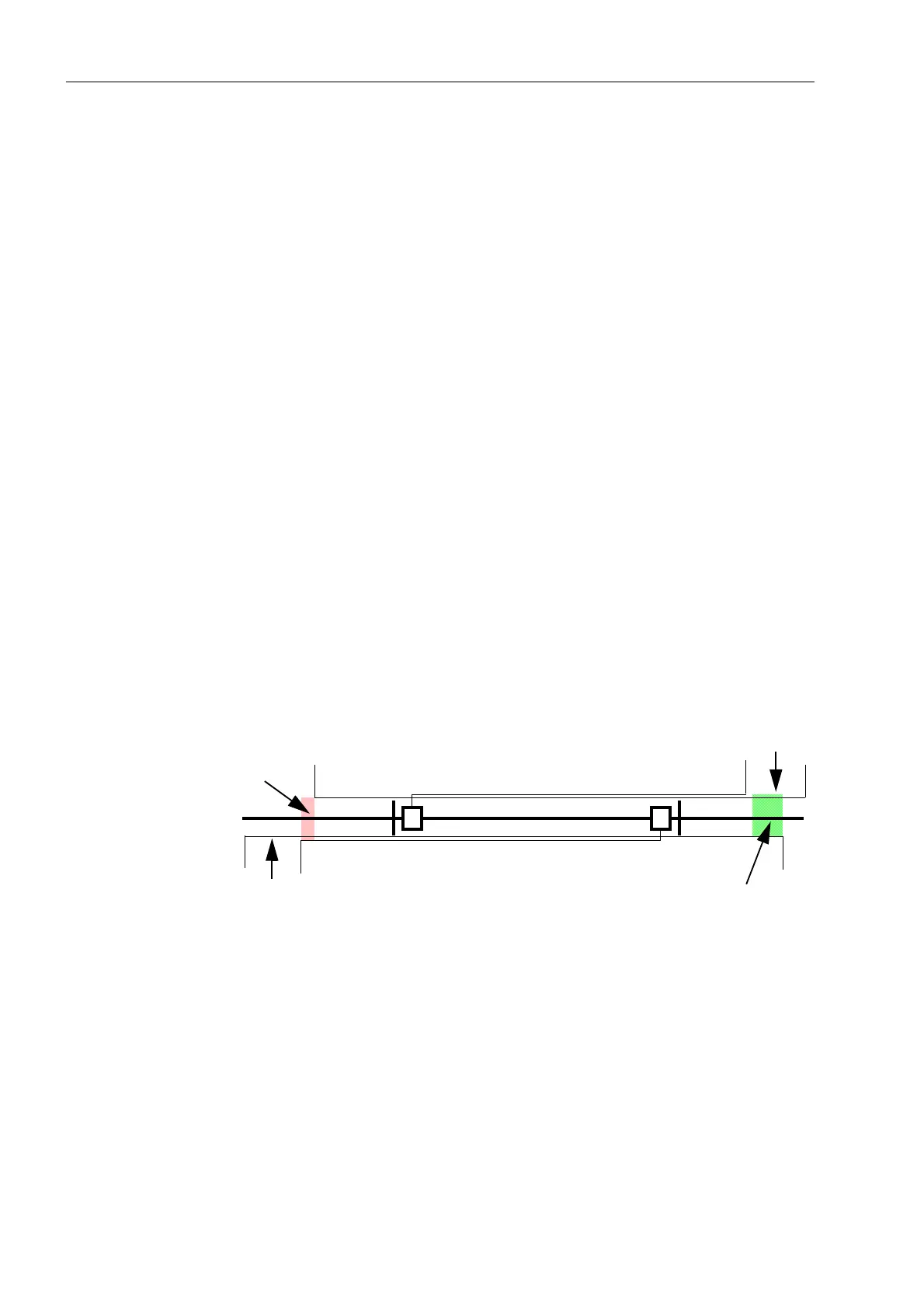Functions
6-98 7SA6 Manual
C53000-G1176-C133-1
− 3LORW:LUH
&RPSDULVRQ = Pilot wire comparison with control wires, as referred to in
Sub-section 6.4.1.10,
− 5HYHUVH
,QWHUORFNLQJ = Reverse interlocking with control wires, as referred to in
Sub-section 6.4.1.11.
In address )&77HOHS'LV the application of a teleprotection scheme can
be switched 21 or 2)).
If the teleprotection is applied to a line with three ends, the address must be set
to /LQH&RQILJ = 7KUHHWHUPLQDOV, otherwise it remains at the setting 7ZR
7HUPLQDOV.
Distance Protection
Prerequisites
For all applications of teleprotection schemes (except PUTT), it must be ensured that
the fault detection of the distance protection in the reverse direction has a greater
reach than the overreaching zone of the opposite line end (refer to the shaded areas
in Figure 6-60 on the right hand side)! This is normally predefined for the U/I/ϕ–pickup
since the local voltage of a reverse fault is smaller than the voltage of the remote
supplied end. In the case of the impedance pickup at least one of the distance stages
must be set to 5HYHUVH or 1RQ'LUHFWLRQDO. During a fault in the shaded area at
the left of Figure 6-60, this fault would be in zone Z1B of the protection at B as zone
Z1B is set incorrectly. The distance protection at A would not pick up and therefore
interpret this as a fault with single end infeed from B (echo from A or no block signal
at A). This would result in a false trip!
To produce a blocking signal the blocking scheme additionally requires a fast reverse
stage. For this purpose, the third zone is to be applied without time delay (see also
“
Note
” on page 6-62 in Subsection 6.2.4.2).
Figure 6-60 Distance protection setting with permissive overreach schemes
Time Settings The send signal prolongation 6HQG3URORQJ (address ) must ensure that the
send signal reliably reaches the opposite line end, even if there is very fast tripping at
the sending line end and/or the signal transmission time is relatively long. In the case
of the permissive overreaching schemes 3277,'LUHFWLRQDO&RPSDULVRQ
3LFNXS and 8QEORFNLQJ this signal prolongation time is only effective if the device
has already issued a trip command. This ensures the release of the other line ends
even if the short-circuit has been cleared very rapidly by the instantaneous zone Z1.
In the case of the blocking scheme %ORFNLQJ the send signal is always prolonged by
this time. In this case it corresponds to a transient blocking following a reverse fault.
This setting can only be changed with DIGSI
®
4 under “Additional Settings”.
A
B
Z1B(A)
Z1B(B)
PICKUP(A)
PICKUP(B)
correct
incorrect!
PICKUP(B)
PICKUP(A)

